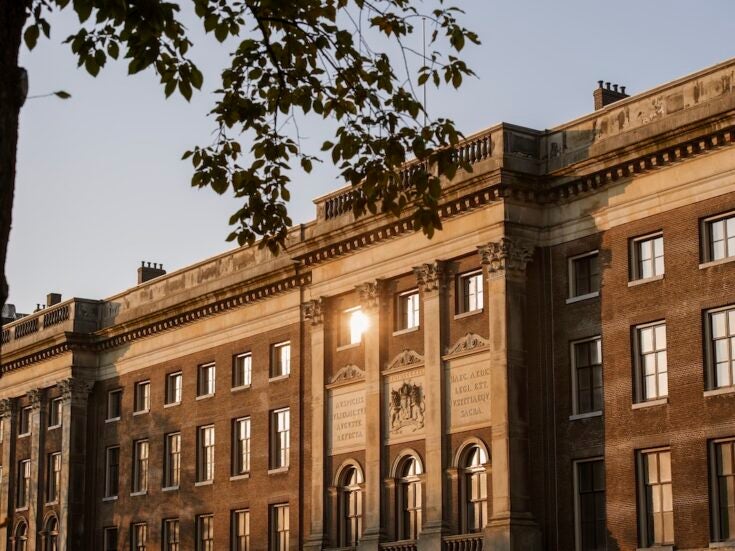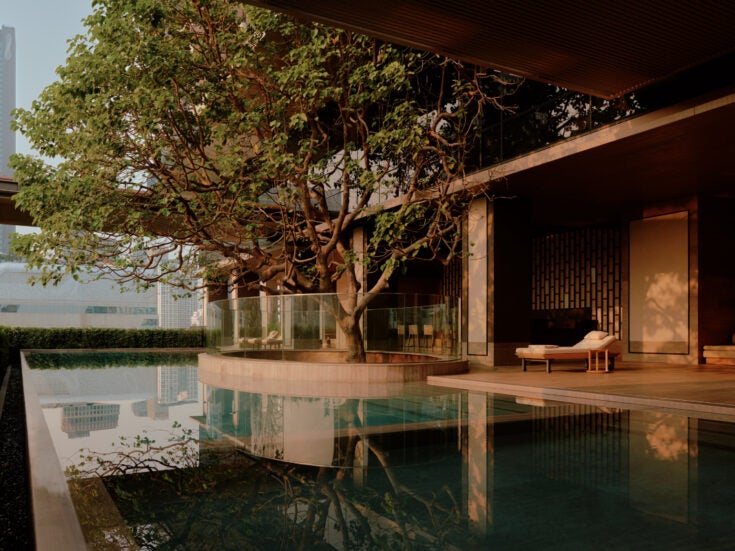There are many beautiful palaces in India. Experience the intricate architecture of Jaipur’s Hawa Mahal along with the southern splendour of Mysore’s Amba Vilas Palace and enjoy the magical experience of these seven magnificent Indian palaces.
Mysore Palace or Amba Vilas, Mysuru, Karnataka
Nicknamed the “City of Palaces”, Mysuru has seven palaces, including the historical Amba Vilas Palace, or commonly called Mysore Palace—the official residence of the Wadiyar dynasty (1399-1950). The first Raja of the Kingdom of Mysore, Yaduraya, constructed the first palace in the 14th century. Following several reconstructions, the present palace has been standing tall since 1912.
The three-storey high stone palace made of pink marble domes and grey granite proudly brandishes a five-storey tower, 145 feet tall. The architecture is a mixture of Rajput, gothic and Mughal styles—popularly called Indo-Saracenic architecture during the British Raj. Mysore Palace contains several secret tunnels that lead to other palaces, including Tipu Sultan’s Srirangapatna. After the Taj Mahal, it is one of India’s most famous tourist attractions. The highlight of Amba Vilas is the Golden Howdah, a gold throne made of 185 pounds of the precious metal.
Taj Lake Palace or Jag Niwas, Udaipur, Rajasthan
Located in Lake Pichola, in the city of Udaipur, the Taj Lake Palace or Jag Niwas is a summer palace belonging to the Mewar dynasty was constructed during the reign of Maharana Jagat Singh II between 1743 and 1746. Named Jag Niwas or Jan Niwas after the Maharana, the ornate palace’s marble walls are inlaid with semi-precious stones and festooned with ornamented niches.
In 1983, it was used as a setting for the Bond movie Octopussy and, in 2010. High profile guests of Jag Niwas include Lord Curzon, Queen Elizabeth, Hollywood actress Vivien Leigh and Jacqueline Kennedy.
Umaid Bhawan Palace, Jodhpur, Rajasthan
Designed by British architect Henry Vaughan Lanchester, Umaid Bhawan Palace is the world’s sixth-largest private residence and the property of the royal family of Jodhpur. The huge palace was named after Maharaja Umaid Singh, who decided to build it as a means of compassionate employment to the poor farmers of the area who sought his refuge from an impending famine. Completed in 1943, the palace architecture is a cocktail of Western Art Deco, Indo-Saracenic features and Beaux Arts.
Two wings of the palace are made up of golden-yellow sandstone, with interiors fortified by Makrana marble and Burmese teak wood. The Palace is now split into three functional parts: Taj Palace Hotel (managed by the Taj Group), the royal
Laxmi Vilas Mahal, Vadodara, Gujarat
Built in the Indo-Saracenic style by architect Major Charles Mant under the direction of Maharaja Sayajirao Gaekwad III (ruler of the erstwhile Baroda state) in 1890, Laxmi Vilas Palace is known to be the largest private residence to date with its grounds spanning 500 acres, the gigantic structure makes the Buckingham Palace look like a dwarf. It was even equipped with modern elements such as elevators right from the construction stage—a rarity for palaces in those days.
Taj Falaknuma Palace, Hyderabad, Telangana
Resting on top of a hillock in the city of Hyderabad, the scorpion-shaped Falaknuma Palace overlooks the famed Charminar. Designed by British architect William Mard Marret, Falaknuma was born from the frequent European travels of the Prime Minister of Hyderabad—Nawab Viqar-ul-Umra (uncle to the sixth Nizam). Falaknuma, which means “Mirror of the Sky”, is made of Italian marble with stained-glass adorning the windows. Around 1897-1898, the sixth Nizam of Hyderabad Mir Mahbub Ali Khan took ownership of Falaknuma. From 1911 onwards, the palace was used to house royal guests such as King George V, Queen Mary, Tsar Nicholas II and India’s first President Dr. Rajendra Prasad.
Hawa Mahal, Jaipur, Rajasthan
Situated at the edge of Jaipur’s City Palace the Hawa Mahal or “Palace of Breeze” was built by Maharaja Sawai Pratap Singh in 1799, with the architectural capabilities of Lal Chand Ustad who intelligently used the laws of physics and the design of a bees honeycomb to create this naturally air-conditioned marvel. A blend of Rajput and Mughal architecture built specifically for the royal ladies, the Palace’s five-storey pyramidal exterior (shaped like Lord Krishna’s crown) contains 953 jharokhas or small windows that are embellished with brilliantly carved, intricate latticework that cools the air coming in; making the torrid Rajasthan summer seem pleasant.
However, the main intention of the latticework was to allow the veiled ladies of the royal family (following a strict “purdah” system) to observe the festivities and processions on the streets without coming into the public eye. Hawa Mahal’s top three floors are just one big single room. The red and pink sandstone construction matches with Jaipur’s sobriquet “Pink City”.
Ujjayanta Palace, Agartala, Tripura
Named by Indian poet and Nobel Prize laureate Rabindranath Tagore who was a frequent guest of the royal family of the erstwhile Kingdom of Tripura, the double-lake fronted Ujjayanta Palace lies in the heart of Agartala city. Inspired by Roman, Mughal and British architecture, the neoclassical Palace was designed by Martin and Burn Co. under the supervision of Maharaja Radha Kishore Manikya, King of Tripura, between 1899 and 1901—after the original palace of 1862, built by King Ishan Chandra Manikya, was razed to the ground by an earthquake in 1897.
From 1973-2011, Ujjayanta Palace was used as the State Legislative Assembly. A State Museum since 2013, the stunning white structure is equipped with Rs. 100 million worth of seismic retrofitting and contains 22 galleries exhibiting India’s history, tradition, art and culture of the northeastern states of the country.













